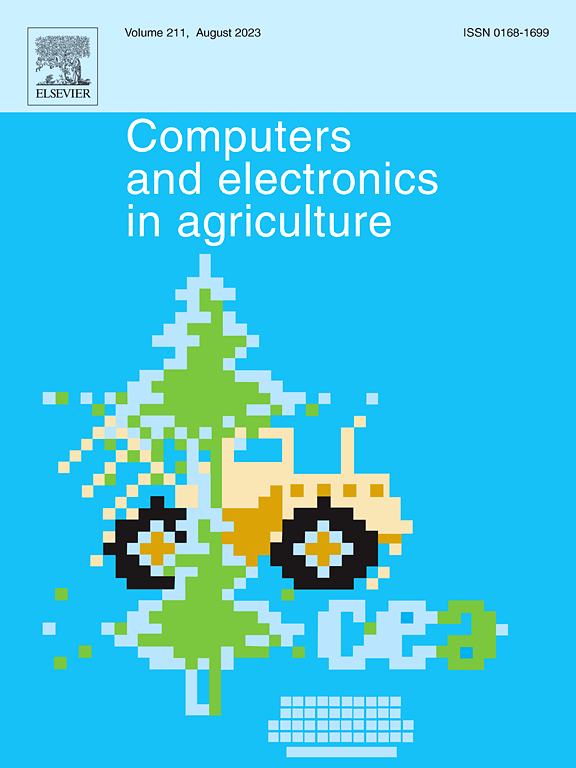Field roads passable area recognition via multi-sensor fusion based on segment anything model
IF 7.7
1区 农林科学
Q1 AGRICULTURE, MULTIDISCIPLINARY
引用次数: 0
Abstract
Rapid and effective recognition of the passable area of field roads is of great significance to unmanned agricultural machinery. This paper introduces FastL-SAM, a method that fuse 16-channel LiDAR point clouds and camera images based on Segment Anything Model (SAM). In this paper, a data acquisition platform was built to construct a multimodal dataset containing two road types and three exposure levels. We performed spatial synchronization on the multimodal data and extracted passable area point clouds based on road surface characteristics. These point clouds were then transformed and used as input prompts for SAM. After quantization and compression, the passable area of the field road was determined. Experimental results indicate that FastL-SAM achieved a Mean Intersection over Union (MIoU) of 91.75 % and an average Accuracy (Acc) of 96.34 %, outperforming the original SAM by 1.83 % and 2.43 % respectively, and demonstrating robust generalization. FastL-SAM achieved an average processing speed of 70 ms/frame with a recognition range of approximately 78 m for straight roads while also effectively recognizing forked roads. This performance meets the requirements of autonomous agricultural machinery systems for real-time processing and an extensive recognition range.
基于分段任意模型的多传感器融合野外道路通行区域识别
快速有效地识别田间道路通行区域对无人驾驶农机具有重要意义。本文介绍了一种基于分段任意模型(SAM)的16通道激光雷达点云和相机图像融合的方法FastL-SAM。本文构建了一个数据采集平台,构建了包含两种道路类型和三个暴露水平的多模态数据集。我们对多模态数据进行空间同步,并根据路面特征提取可通行区域点云。然后将这些点云转换为SAM的输入提示符。经过量化和压缩,确定了野外道路的可通行面积。实验结果表明,FastL-SAM的平均相交率(MIoU)为91.75%,平均准确率(Acc)为96.34%,分别比原始SAM提高1.83%和2.43%,具有较强的泛化能力。FastL-SAM的平均处理速度为70 ms/帧,对直路的识别范围约为78 m,同时对分叉路也能有效识别。这种性能满足了自主农业机械系统对实时处理和广泛识别范围的要求。
本文章由计算机程序翻译,如有差异,请以英文原文为准。
求助全文
约1分钟内获得全文
求助全文
来源期刊

Computers and Electronics in Agriculture
工程技术-计算机:跨学科应用
CiteScore
15.30
自引率
14.50%
发文量
800
审稿时长
62 days
期刊介绍:
Computers and Electronics in Agriculture provides international coverage of advancements in computer hardware, software, electronic instrumentation, and control systems applied to agricultural challenges. Encompassing agronomy, horticulture, forestry, aquaculture, and animal farming, the journal publishes original papers, reviews, and applications notes. It explores the use of computers and electronics in plant or animal agricultural production, covering topics like agricultural soils, water, pests, controlled environments, and waste. The scope extends to on-farm post-harvest operations and relevant technologies, including artificial intelligence, sensors, machine vision, robotics, networking, and simulation modeling. Its companion journal, Smart Agricultural Technology, continues the focus on smart applications in production agriculture.
 求助内容:
求助内容: 应助结果提醒方式:
应助结果提醒方式:


